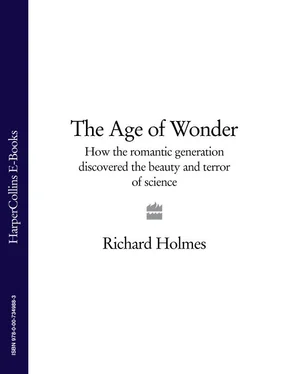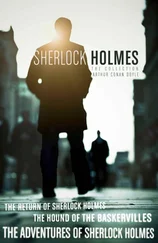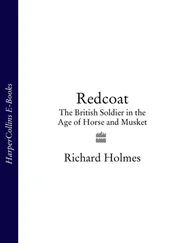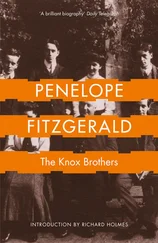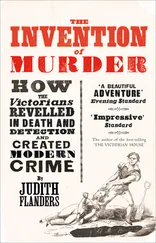All these speculative essays assumed the high probability that extraterrestrial life existed, either within the immediate solar system, or further out among the stars. James Ferguson, for example, stated in the opening of his Astronomy Explained (1756) that the entire universe was evidently populated, if not positively crowded, with living forms: ‘Thousands upon thousands of Suns…attended by ten thousand times ten thousand Worlds…peopled with myriads of intelligent beings, formed for endless progression in perfection and felicity.’ 101 It was further assumed that such life forms, though not necessarily human in appearance, would have developed civilisations and sciences superior to our own. The question of whether they were ‘fallen’ in a religious sense, and required Redemption according to Christian doctrine, remained a moot point among astronomers, few of whom would have considered themselves as ‘atheists’ in any modern sense. ‘An undevout astronomer is mad,’ as the poet Edward Young reflected in Night Thoughts (1742-45). ♣
However, the growing sense of the sheer scale of the universe, and the possibility that it had evolved over unimaginable time, and was in a process of continuous creation, did slowly give pause for thought. For a poet like Erasmus Darwin, in The Botanic Garden (1791), it put the Creator at an increasing shadowy distance from his Creation. 102
This interest in extraterrestrial life was one of the reasons that Herschel remained so fascinated by the surface of the moon, with its mysterious mountains and craters, and dramatically shifting patterns and colours of shadow. When it was invitingly at the crescent (the best time to study surface detail), but too low to be observed from his tiny back yard, he would take his seven-foot telescope out into the cobbled street in front of the house. So it was, in December 1779, while Herschel was ‘engaged in a series of observations on the lunar mountains’, that a passing carriage stopped, a young gentleman sprang out, and he had his first historic meeting with Dr William Watson, junior. This was Herschel’s first really important scientific contact in England, one not made until he was forty-one. Watson was only thirty-three.
Herschel later recalled the moment with appropriate gravity: ‘The moon being in front of my house, late in the evening I brought my seven-foot reflector into the street…Whilst I was looking into the telescope, a gentleman coming by the place where I was stationed, stopped to look at the instrument. When I took my eye off the telescope, he very politely asked if he might be permitted to look in…and expressed great satisfaction at the view. Next morning, the gentleman, who proved to be Dr Watson, junior (now Sir William), called at my house to thank me for my civility in showing him the moon.’ 103
Caroline remembered it rather less formally. Herschel and Watson were so immediately taken with each other that very night that they burst into the house and began ‘a conversation which lasted until near morning; and from that time on [Dr] Watson never missed to be waiting on our house against the hours he knew my Brother to be disengaged’. 104
Watson warmly befriended Herschel, and encouraged his work even to the extent of helping with pounding horse-dung moulds and casting speculum mirrors. He quickly became what Caroline called ‘ almost an intimate of the family’. 105 He had Herschel elected to the Bath Philosophical Society as ‘optical instrument maker and mathematician’ (no mention of musician), and over the next two years encouraged him to submit no fewer than thirty-one papers at its meetings. These included ‘On the Utility of Speculative Enquiries’, ‘On the Existence of Space’, and further unconventional observations on the moon. They are evidence of the extraordinary intellectual ferment that had seized upon Herschel.
His notion of the cosmos was already far from conventional, and several of these papers were what would now be called ‘thought experiments’. In his ‘Space’ paper, delivered on 12 May 1780, he astonished his audience with his radical thoughts on time and distance: ‘Huygens said that it was possible some of the fixt Stars might be so far off from us that their light tho’ it travelled ever since the Creation at the inconceivable rate of 12 million of miles per minute, was not yet arrived to us. The thought is noble and worthy of a Philosopher. But [should] we call this immense distance a mere imagination ? Can it be an abstract Idea ? Is there no such thing as space?’ 106
In the case of his moon speculations, he raises the question whether a scientific idea has to be ‘correct’ to be significant. One of Herschel’s most ingenious ideas was that moon craters were artificially constructed circular cities (or ‘Circuses’), built especially to harness solar power for the lunar inhabitants: ‘There is a reason to be assigned for circular Buildings on the Moon, which is that as the Atmosphere there is much rarer than ours and of consequence not so capable of refracting and (by means of clouds shining therein) reflecting the light of the Sun, it is natural enough to suppose that a Circus will remedy this deficiency. For in that shape of Building one half will have the direct, and the other half the reflected, light of the Sun. Perhaps, then on the Moon every town is one very large Circus?’ 107 ♣
So, besides the two main projects, to record all new double stars and all new nebulae, Herschel was also embarked on a third and partly secret programme in 1779: to discover life on the moon. For some time he did not risk sending this section of the lunar paper to Maskelyne at the Royal Society, but both Watson and Caroline were aware of it. This was one of the reasons he needed to construct better telescopes.
The moon project had begun with a long entry made in his Observation Journal for 28 May 1776. He saw ‘what I immediately took to be woods or large quantities of growing substances in the Moon’. With a certain angle of solar light, some of the lunar shadows looked like ‘black soil’ spread down a mountainside. Other puzzling stippled shadows, especially in the Mare Humorum, Herschel believed were enormous ‘forests’, made up of huge, spreading leafy canopies, or at least ‘large growing substances’. Because of low lunar gravity, this gigantic ‘vegetable Creation’ was evidently ‘of a much larger size on the Moon than it is here’. 108
Similarly, he tended to believe that there were so many of the smaller moon craters that they must be artificial constructions: ‘By reflecting a little on this subject I am almost convinced that those numberless small Circuses we see on the Moon are the works of Lunarians and may be called their Towns.’ Nonetheless, true science required not speculation but accurate observation and telescopic proof. ‘But this is no easy undertaking to make out, and will require the observation of many a careful Astronomer and the most capital Instruments that can be had. However this is what I will begin.’ 109
The light-gathering power of Herschel’s seven-foot reflector allowed him to see many objects that no previous astronomers had accurately observed, or at least recorded. With Caroline taking notes at his dictation, they began to compose a new catalogue of double stars, and to develop a system of recording the exact time and position of any unusual stellar phenomena not previously catalogued by Flamsteed. By this means Herschel began to build up an extraordinary, instinctive familiarity with the patterning of the night sky, which gradually enabled him to ‘sight-read’ it as a musician reads a score. He would later himself use such musical analogies to explain the technique and art of observation.
Читать дальше
